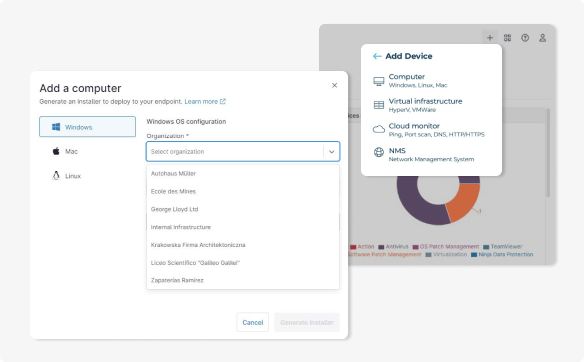A solution you can trust
NinjaOne allows Zero Latency VR’s IT team to focus on projects that contribute to growth rather than endpoint support and maintenance. “The biggest benefit of NinjaOne for us is peace of mind – we just don’t have to worry about our fleet,” said Scott Human, head of IT operations.

Turbocharging deployment with automation
Switching to NinjaOne fully automated Zero Latency VR’s software deployment process. “Deploying…software across all 3,400 devices now takes just a few clicks and is completed in just a few minutes,” explained Zbigniew Nastalski, senior software engineer at Zero Latency VR.

Driving customer satisfaction
“With NinjaOne, we’ve built a process that allows us to innovate rapidly, respond to issues proactively, and deliver support to customers in a way that sets us apart in the industry,” said Human.

